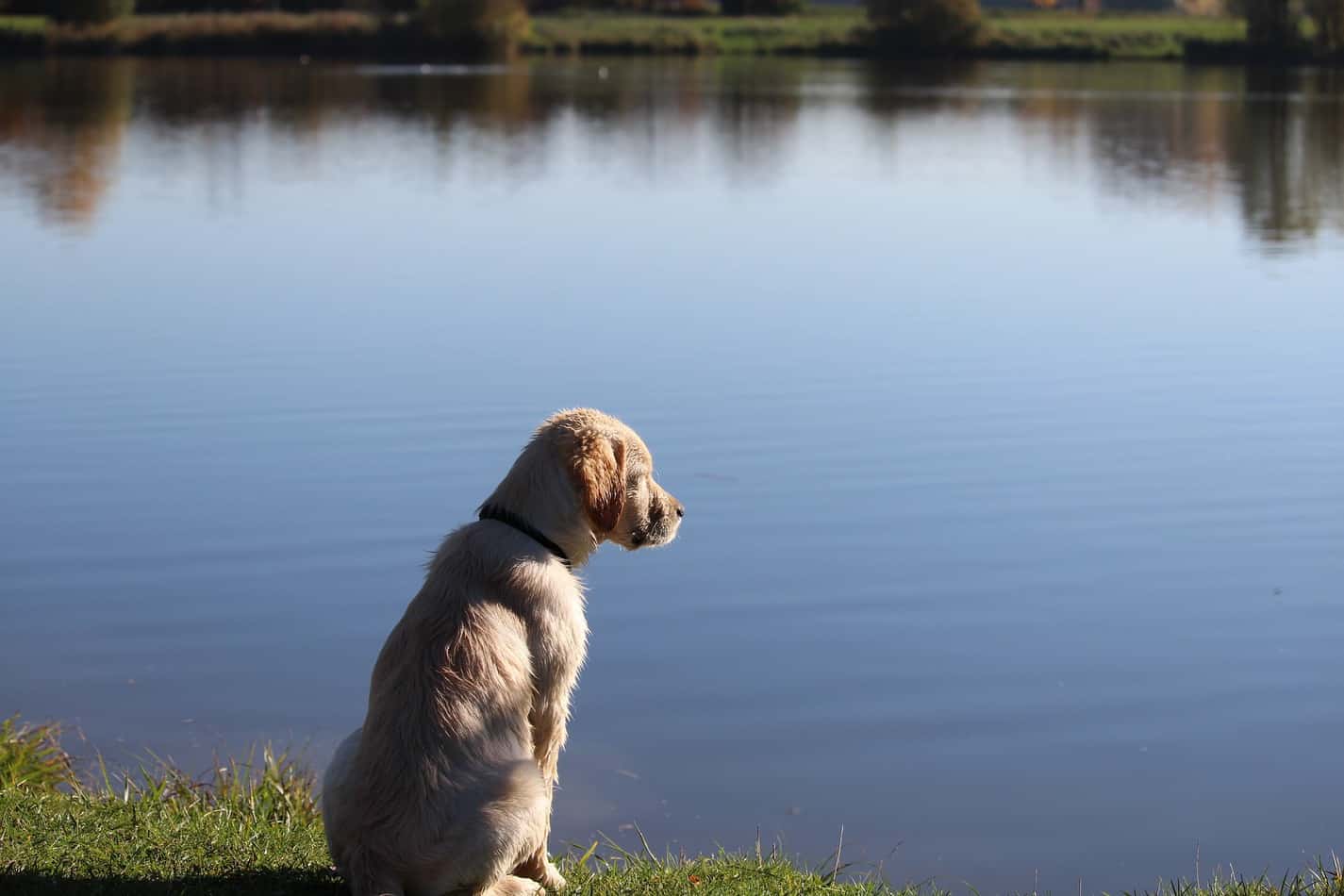Contents
What age to teach a puppy to swim
When you get a puppy, there will be certain things you will want them to do. Things like playing fetch, rolling over or heeling on walks. All these things require training and a bit of patience, it is the same for swimming and what age to teach a puppy to swim is a common question.
The ideal age to start teaching a puppy to swim is around 10 weeks. This does not mean they should be thrown in the deep end straight away, it is vital that they are introduced slowly to the water. If you have dog breeds such as a golden retrievers, Labradors or Spaniels, then you may find less encouragement is required to get them in the water. One thing to remember is not all dog breeds are good swimmers and breeds such as bulldogs or less agile breeds will often struggle to start swimming.
If you want your dog to be a keen swimmer then you will have to teach them to swim. It can be a common misconception that dogs can swim naturally, this is due to the fact that if you were to put them in deep water they will naturally start paddling with their paws. Just because they start paddling does not mean they will stay afloat, I mean what would your natural instinct be if you fell into some deep water, much the same I expect.
If you want your dog to swim like a pro then patience and a little encouragement will go a long way in making it happen. Here we outline what age is best to start teaching a dog to swim and how you can make the process a bit easier.
When Should A Puppy Start Swimming?
As previously mentioned around 10 weeks is a good point to start introducing them to water. The main idea is that you want to start as young as possible, but you don’t want to scare them and at this young age they will easily associate things with a positive or negative experience. When teaching a puppy anything it is always important to positively re-enforce any completed tasks, this goes for swimming too. Establishing a good routine of praise in the form of treats and affection straight after a swim can help your puppy to become more confident with the water.
If you get your puppy in the summertime then a good idea is to purchase a paddling pool. With a paddling pool your pup can go in and out as they please. Try putting some toys into the pool to encourage them to play in the water.
If its not the summertime then using the bath can be a good way of introducing them to water, again try putting toys into the bath to encourage them to play. Its best not to splash them too much at first as they may not like it, however if your pup seems to really enjoy the water then splash away.
How To Introduce A Puppy To Swimming
If you don’t live near to any water then introducing a puppy to swimming can be tricky. Try looking for dog swimming pools, they do exist and can be common in more urban areas. If you are lucky enough to live near to some water then introducing your pup to swimming should be a bit easier.
The first item you are going to need are wellie boots and water proof trousers or if it’s the summer you can put your swimming gear on and go in with your pup. Try introducing them slowly into the shallow areas, if there are waves, they may become scared and often dogs know not to venture too far into crashing waves.
Once your pup has started to get used to the water go a bit deeper and see if they follow, once they start losing their footing you may find they begin paddling on their own or they turn around and get out. Don’t worry too much about this on the first attempt, you may just have a risk averse dog which is not always a bad thing. After a few times using this method they should begin swimming on their own, just continue encouraging them and they will get there in good time.
Can All Dogs Swim?
An important fact to remember is that not all dog’s can swim. Many owners just assume their dog can swim, if you have a retriever, spaniel, poodle or Irish setter then you are probably right to assume they can swim. However, there are some dog breeds that find it almost impossible to swim and certainly shouldn’t attempt to, due to the risk of drowning.
Dogs with short muzzles such as bulldogs or pugs can find it difficult to breathe whilst swimming, as the risk of inhaling water is much more likely.
Dogs with overly large heads in comparison to their bodies find it difficult as they tend to end up in a vertical position making it difficult to move forwards.
Another trait in dogs that can’t swim is their short legs, dog breeds such as basset hounds and dachshunds have extremely short legs which causes them to struggle to stay afloat when paddling. If your looking for some of best dogs for swimming or just those dogs that love water PetMD have produced a great post on the best dogs for swimming.
Water Accessories For Dogs
If you have a breed of dog that is not so agile or averse to swimming, then a doggy life jacket can be a great way of letting them swim without the worry of them getting into trouble. If you have a life jacket on your dog it may be possible to allow your dog to swim despite their own inability to do so. Some of the breeds above could benefit from a life jacket although it is still wise to be cautious when letting them swim.
Life jackets can also help with rehabilitation. If your dog has an injured leg or paw swimming can be a great way to regain some of their strength back. Swimming is less damaging on a dog’s body as it involves less impact, helping to rebuild muscle without the added impact.
Other accessories to use with your dogs are water toys. There are many toys made for use in the water and play can be a great way of encouraging your dog to swim. The idea is to try to associate the activity of swimming with a positive feeling, this way your dog will feel comfortable in and out of the water. It can be difficult to find great toys for using in the water so we compiled some of our favourites to help you decide. Have a look at our post on “Best Water Toys For Dogs”
Benefits Of Teaching Your Puppy To Swim At A Young Age
Its good to know what age to teach a puppy to swim but its also important to know the benefits of swimming if you succeed.
- The obvious benefit is fitness and strength. Swimming is an amazing activity to build strength which your puppy will be doing from a young age.
- Swimming from a young age can help to build confidence and give your puppy an idea of its limitations.
- Teaching a puppy to swim can also help with other training activities, by introducing your pup to reward based training.
- It creates a great opportunity for you and your puppy to bond early on. Having that bond will help your puppy to trust you making training easier in the long run.
- Because puppies are still growing at such a young age, swimming can help by giving them a good amount of exercise without the impact of running or jumping.
- Young dogs can often become very difficult to entertain at home, due to the amount of energy they have. Swimming is a great way to use that puppy like energy and in turn have some quiet evenings at home.
- Lastly it is just great fund. The water has many benefits but the more you embrace the water the more fun you will have with it.
Hopefully this article has helped you with introducing your dog to swimming and given you a good idea of what age to teach a puppy to swim. As mentioned before try to introduce them as young as possible but with patience and gentle encouragement.
Read our article on how to clean your dog after a walk, this should help with a wet, smelly and possibly muddy puppy after swimming.
If you enjoyed this article check out the rest of our website for articles on everything dog walking and the outdoors or subscribe for the latest posts.

